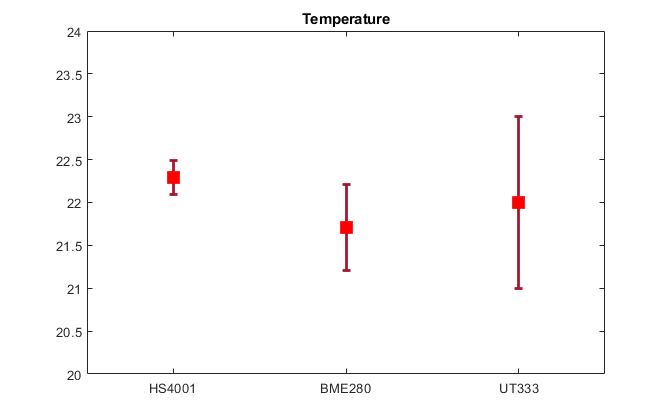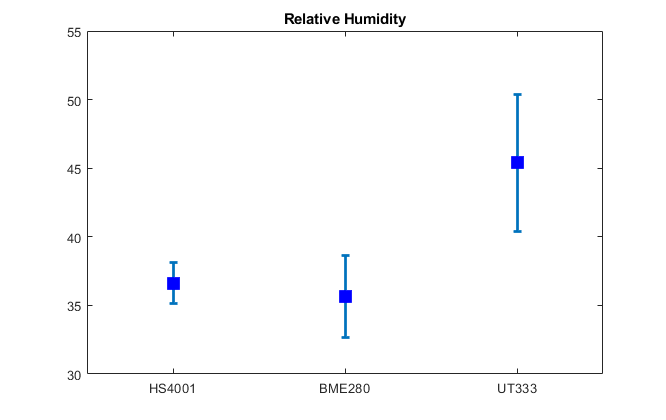Unboxing and first tests with air quality and humidity/temperature sensor
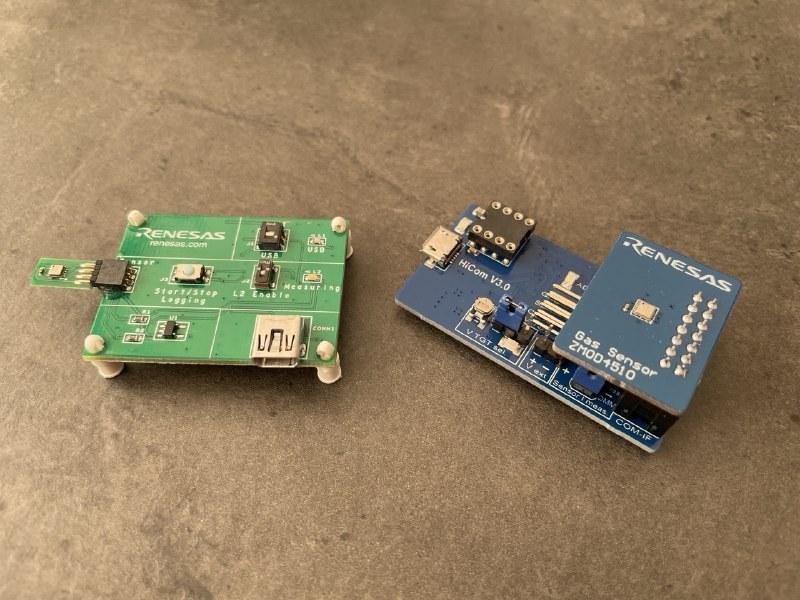
These modules came in a nice form factor. I have only two critics to do:
1) The HS4000 demo board has an old USB-MiniB connector, which is not used anymore recently, so you can't easily exchange cables.
2) The connection between the demo board and the temperature/humidity sensor is made with 0.050" headers, which are not so stable and less convenient compared to a more standard 0.100" header. Since the demo board isn't so small, you don't need to have a really small connector. And if the sensor had had a 0.100" header, it would have been easier to mount it separately in a proto board to perform different tests.
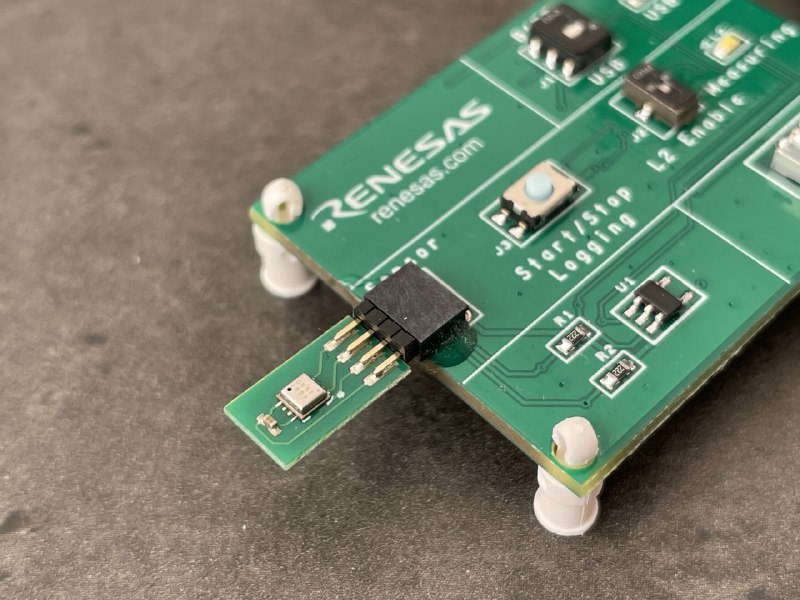
To make a first test measurement, I placed both the ZMOD4510 and HS4001 sensors outside, making sure that they were in a shadow, so not influenced by the direct sunlight.

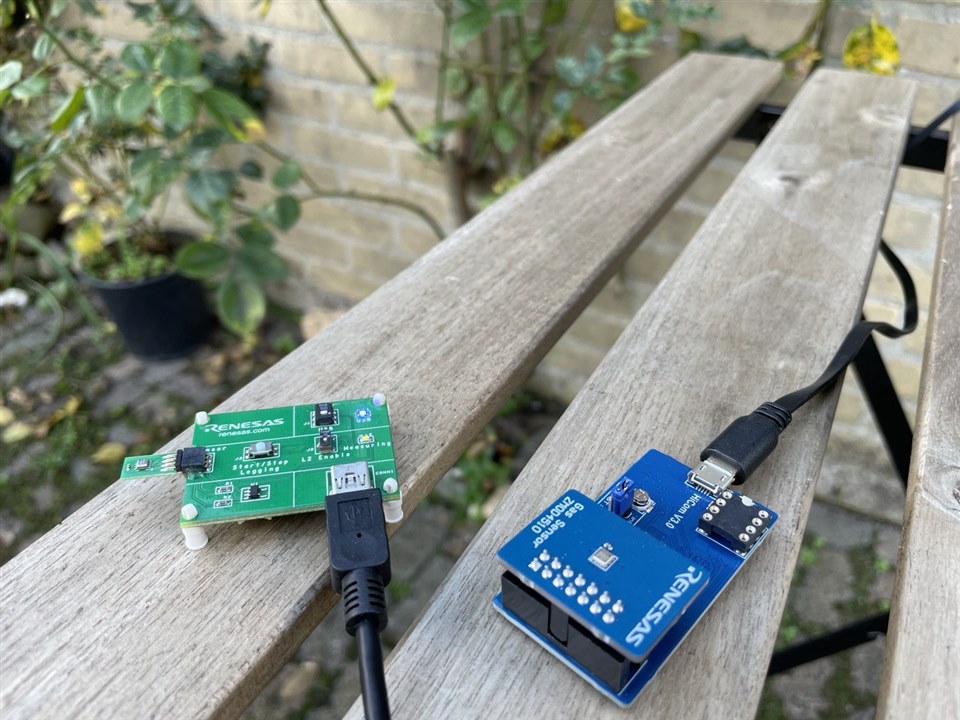
Yes...I have to clean my garden a little bit!
First of all, I used the temperature and humidity sensor, because I also needed these data to properly set the OAQ algorithm for the air quality sensor.
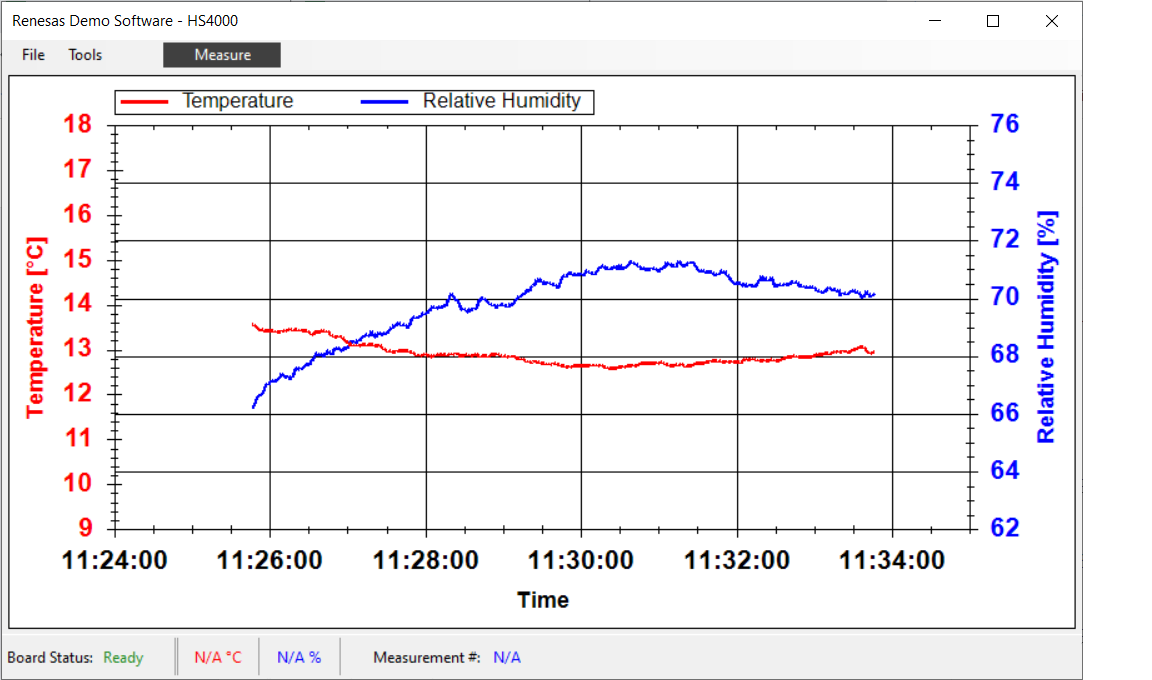
The measure took 4-5 minutes to be stable, probably because the sensor was inside my house before this measure. As you can see from the plot, the relative humidity sensor is slower, compared to the temperature.
When the sensor will be stable outside, in my "Environmental Station", in a proper ventilated enclosure, it won't require too much time to provide a stable measure in every cycle, I guess.
With this demo software is easy to export the acquired data to a CSV file (File -> Save data...). So, I used this exported data to calculate an average of the last 60 seconds. I think it wasn't really necessary, because the maximum oscillations in one minute, after the stabilization, was only 0,23°C and 0,40%RH, but I preferred to be more accurate.
You can see here the sample CSV file that you can obtain from this sensor and demo software.
The result was 12.92°C and 70,26%RH, which I was able to set as the Ambient Conditions parameters in the ZMOD4510 Demo software (GasSensorEvaluation-7.9.0).
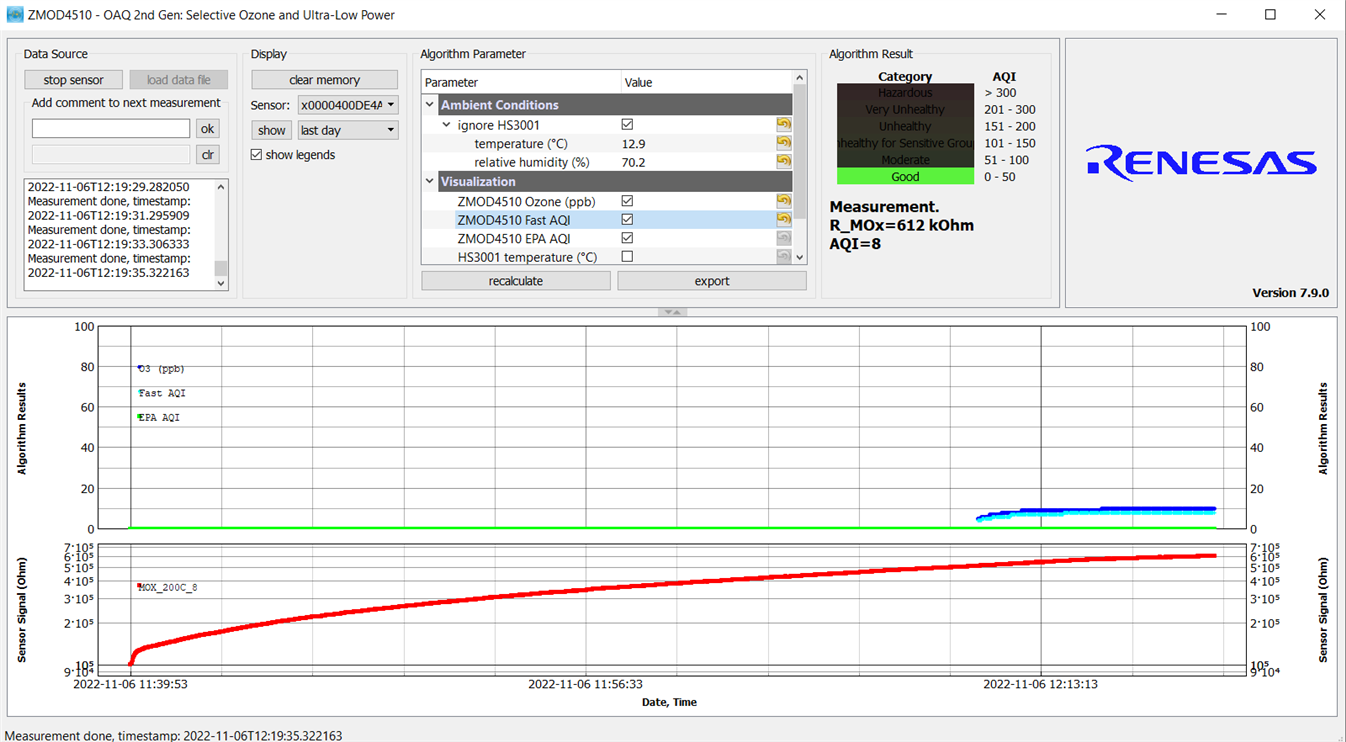
Also from this evaluation tool you can export the data in a CSV. Here you can find a complete log of all the measurements and index calculations. I found as a default 30 samples per second in the CSV. From here, you can easily retrieve the timestamp of the first FAST_AQI number which was exactly after 30 minute. But even if the first AQI result was 4, the index started to increase within the next 4 minutes, until it reached a stable result (8).
Air quality index comparison with existing local data
To validate the registered data, it's useful to compare it with local data, easy accessible from the web. There are 2 stations within my area (near Eindhoven, Netherlands) from which I can get comparable data. These two stations are not so far from my house, so I can expect that the NO2 and O3 levels will be not so different from my garden.
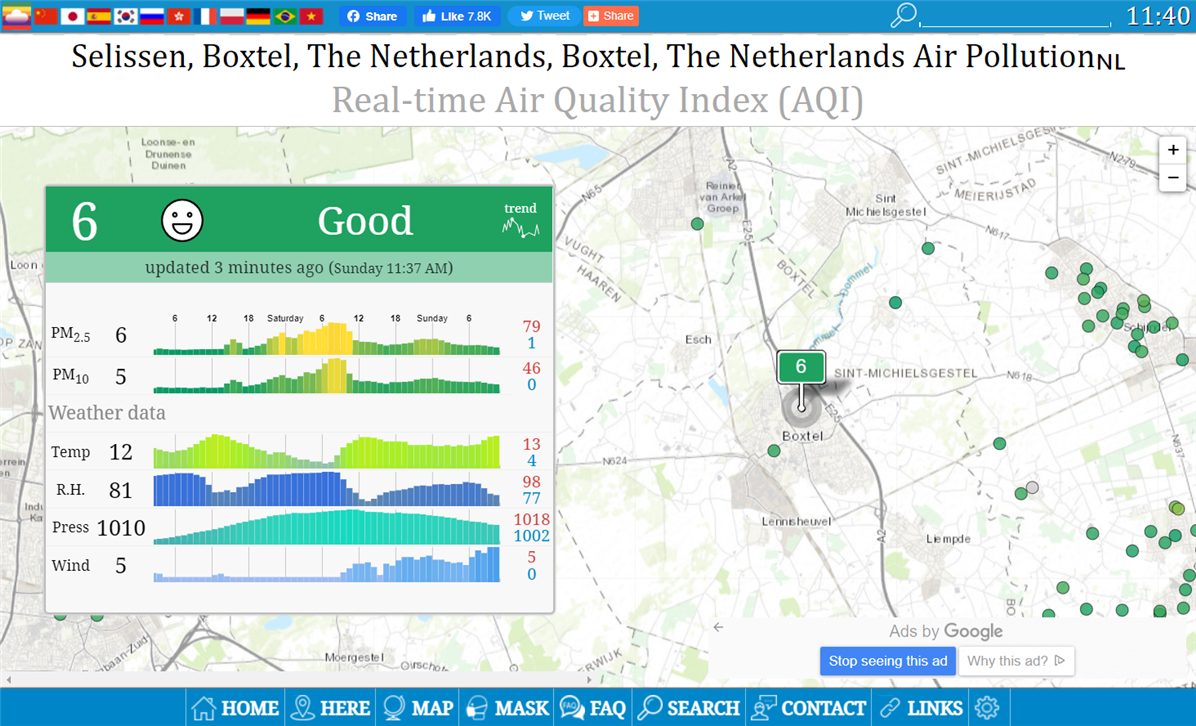
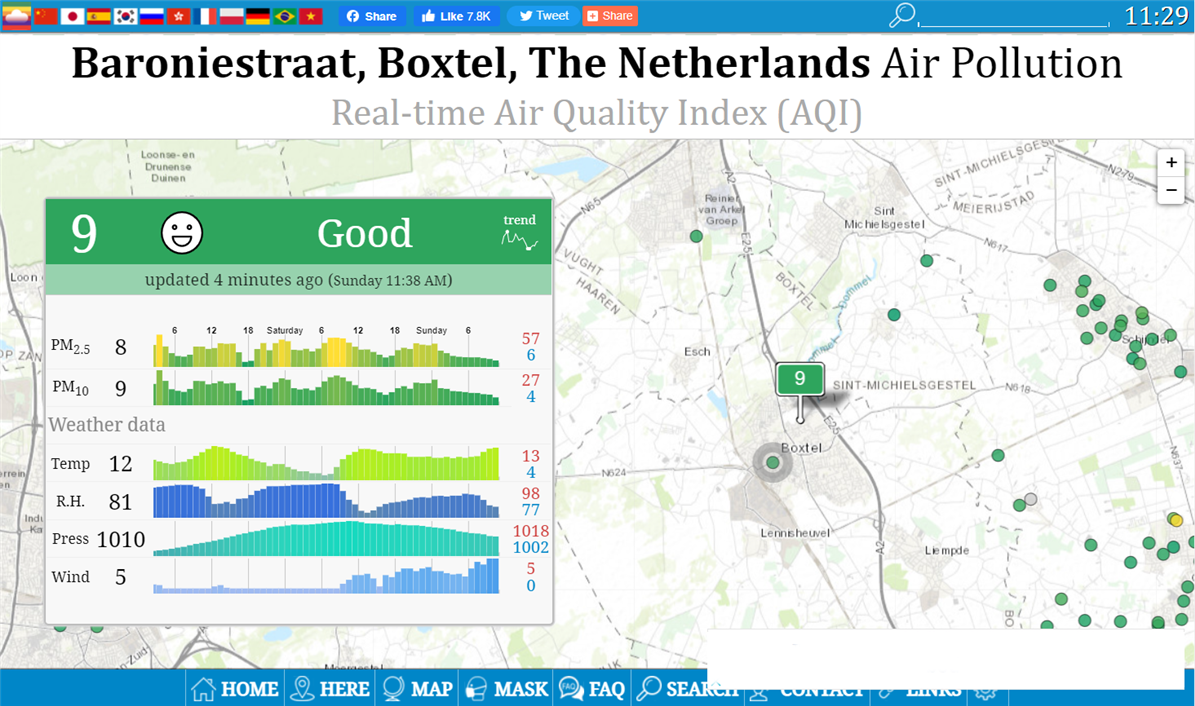
These data come from https://aqicn.org/ network and they seems pretty aligned my measured AQI, even if in this case the AQI calculation is based on PM2.5 and PM10, not on NO2 and O3 levels.
Temperature/humidity comparison with other meters
Unfortunately I don't have a calibrated thermometer or hygrometer to validate the HS4001 sensor, but it was useful to compare the measurement with other instruments or sensors available in my lab.
So, I placed different sensors really close each other and compared the data in the same instant.
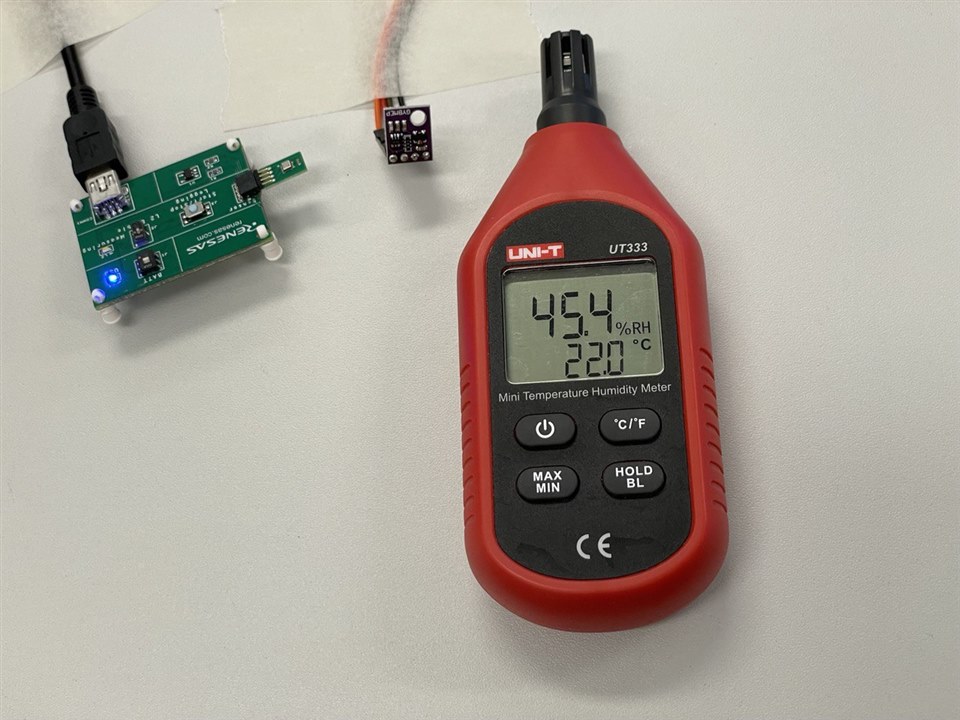
These are the results:
| Sensor/instrument | Temperature [C] | Relative Humidity [%] | Accuracy |
| HS4001 | 22.29 | 36.61 | ±0.2°C, ±1.5% RH |
| BME280 | 21.71 | 35.64 | ±0.5°C, ±3% RH |
| UT333 | 22.0 | 45.4 | ±1°C, ±5% RH |
To help me to compare the measurement, considering the different accuracies (stated on datasheets), I've made the following plot with Matlab:
As you can see the temperature data are more closer each other and at least all the 3 measures overlap around 22°C.
About the relative humidity, the first two sensors are pretty aligned around a similar number, while the UNI-T handheld instrument is completely out of their range!
By the way, the Renesas HS4001 sensor is definitely one of the most accurate sensor of his category!

